Track Premiere: NecroticGoreBeast – ‘Knuckle Deep Convulsions’
Slam crushers NecroticGoreBeast release the latest from their new EP, Brute.
The post Track Premiere: NecroticGoreBeast – ‘Knuckle Deep Convulsions’ appeared first on Decibel Magazine.
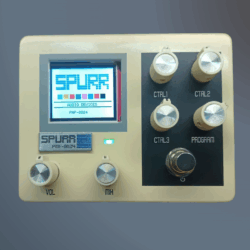
Spurr Audio Announces the PMF-8824: A Personal Multi-FX Modulator
Spurr Audio has introduced the PMF-8824, a compact multi-modulation pedal that fuses vintage digital aesthetics with modern DSP-based creativity. Inspired by the design philosophy of early 1980s personal computers, the PMF-8824 is equal parts nostalgic and futuristic, offering players a unique toolset for creating modulated textures and unconventional tones.The PMF-8824 features eight custom-designed effects, ranging from classic time-based modulation to more experimental sound-shaping tools. Each program has its own dedicated screen layout, complete with visual feedback and real-time control over three contextual parameters (Ctrl 1–3). Two additional knobs control Mix and Volume, while a Program selector knob cycles through effects. All visuals are displayed on a retro-inspired pixel screen that responds to user interaction.Though the unit is mono, each effect is crafted to feel immersive, using stereo-style modulation, spatial tricks, and reverb-like environments to expand the perceived soundstage.Included Effects:Phaser – Smooth 4-stage phasing with musical feedbackTremolo – Rich amplitude modulation with waveform selectionFlanger – Dense and metallic swirl with resonant feedbackVibrato – Tape-style pitch wobble with internal ambianceChorus – Wide 4-voice chorus with built-in reverb optionRotary Simulator – Spinning speaker with mic and cabinet controlVCR (VHS Lo-Fi) – Warped, nostalgic tape textures with saturationMicrochoir – Digital choir inspired by classic organ voicing
The PMF-8824 stands out not only for its sounds, but also its interface and visual identity. The pedal’s housing and GUI are modeled after personal computer aesthetics—pixel fonts, windowed layouts, and real-time visual meters give each effect its own interactive “page.” The display changes dynamically depending on the selected effect, ensuring clarity and a user-friendly experience.The PMF-8824 is now available for pre-order for a street price of $219. For more information visit spurraudio.mitiendanube.com.

Human Bulldozer: A Conversation with Kommodus’ Lepidus Plague
A conversation with Lepidus Plague, the unstoppable force behind the Australian one-man black metal campaign, Kommodus.
The post Human Bulldozer: A Conversation with Kommodus’ Lepidus Plague appeared first on Decibel Magazine.
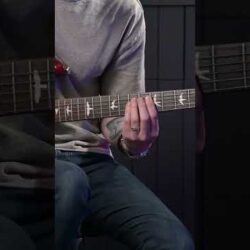
Peavey Decade Too – Josh Homme’s Secret Weapon
In its 60th Anniversary year, Peavey updates the Decade and shares Josh Homme’s “secret weapon” with the rest of us. What the Peavey Decade Too does is recreate the sound…
Read more »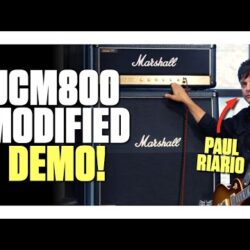
JCM power with modern control? GW checks out the new Marshall JCM800 Modified amp
Guitar World’s Paul Riario heads over to Marshall HQ in NYC to demo the new Marshall JCM800 Modified. This amp delivers iconic Marshall sound with modern upgrades, including master volume,…
Read more »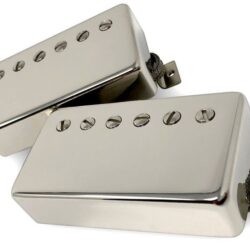
Sheptone Pickups Revives Coveted AB Custom Humbuckers
Sheptone announces the reissue of its coveted AB Custom humbuckers. Revered by tone chasers, professional touring musicians, and collectors alike, the AB Custom humbuckers return with all the hallmarks that made it a modern classic—and more.Built entirely by hand, one at a time, by long-time industry figure and proprietor Josh Vittek, each Sheptone pickup reflects a relentless commitment to tone, authenticity, and craftsmanship. The AB Custom humbuckers are no exception, offering unmatched responsiveness, musical articulation, and the nuanced dynamic range players have come to expect from Sheptone. As the first variation on the original Sheptone Tribute set that launched the business back in 2007, these are considered a medium output PAF-style humbucker providing that little extra push that guitar players just love.Featuring proprietary butyrate bobbins, 42 AWG plain enamel wire, rough cast Alnico 5 magnets, a maple wood spacer, and nickel silver baseplates, the AB Custom humbuckers are built with period-correct components and the highest-quality materials available. Measuring an average of 8.5k in the bridge and 8.0k in the neck, each set delivers vintage-inspired clarity, warmth, and punch making them a top choice for players seeking the elusive “magic” found in the most iconic recordings.Customers can choose from double black, zebra, reverse zebra, or covered configurations with nickel or gold-plated period correct nickel steel covers, offering aesthetic versatility without compromising tone. The AB Custom humbuckers are a premium choice for discerning players who demand the best—whether in the studio, on stage, or in their personal woodshed.Sheptone pickups have long been the secret weapon behind some of todays most beloved tones. With the return of the AB Custom, that legacy continues—one note at a time.To learn more or to order, visit www.sheptone.comPrices start at $818.00 USD per set.
Read more »
Manson META Series MBM-2H Sustainiac demo – Matt Bellamy’s guitar tones on a budget
Guitar World’s Pete Emery tests the Manson META Series MBM-2H Sustainiac – the latest version of Muse frontman, Matt Bellamy’s affordable signature guitars. Full review: www.guitarworld.com/gear/manson-meta-mbm2h-sustainiac-review 00:00 – Intro 00:26…
Read more »Five For Friday: August 8, 2025
This week brings a special kind of darkness with the latest from Crypt Sermon, Blackbraid, Malthusian and more!
The post Five For Friday: August 8, 2025 appeared first on Decibel Magazine.
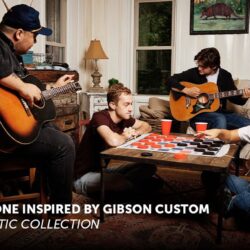
Introducing the Inspired by Gibson Custom Acoustics
Epiphone’s collaboration with the artisans at Gibson Custom just got a major acoustic upgrade! We’re excited to share new acoustic additions to the core lineup, updated with features that make these guitars better than ever.With new Vintage Gloss and Full Gloss finishes, rosewood or ebony fretboards, thermally aged tops, loads of vintage-correct details, historically accurate Gibson “open book” headstocks, and historic-inspired cases, these guitars bring Custom Shop quality to players everywhere at accessible prices.1942 Banner J-45 ReissueThis exceptional acoustic guitar has a thermally aged, solid Sitka spruce top that is reinforced with scalloped X-bracing and paired with a solid mahogany back and sides for the rich, balanced tone that has made the J-45 a longtime player favorite.1957 SJ-200 ReissueMeet the Epiphone 1957 SJ-200 Reissue, an Inspired by Gibson Custom recreation of a rare vintage icon. It features a solid figured maple back and sides, a thermally aged solid Sitka spruce top with traditional scalloped X-bracing, and a two-piece flame maple neck.Hummingbird Deluxe ECThe Hummingbird Deluxe EC has been upgraded and modernized with beautiful, solid rosewood used for the back and sides, giving this guitar the full and rich sound of the traditional Hummingbird, along with the added tonal nuances of rosewood, resulting in a deeper bass and even more sparkling overtones in the highs.Pre-War SJ-200 Rosewood ReissueThe Epiphone Pre-War SJ-200 Rosewood Reissue is replete with vintage-inspired details, including a solid rosewood back and sides, a thermally aged solid Sitka spruce top with traditional scalloped X-bracing made from quarter-sawn solid spruce, and more.1963 Dove ReissueThe back and sides of the 1963 Dove Reissue are made from solid, figured maple. It delivers a bright, clear tone from the maple body, as you might expect, but it also has a bit more bass than a Hummingbird and a very balanced tone overall that works exceptionally well in a wide range of musical genres.Shop Epiphone Inspired by Gibson Custom guitars now.
Read more »Track Premiere: Crimson Butchery – “Lab Rat”
Crimson Butchery are back with Stalker, their third slab of surgical brutality, and we’re thrilled to slice into the premiere of its gnarly fourth track, “Lab Rat.”
The post Track Premiere: Crimson Butchery – “Lab Rat” appeared first on Decibel Magazine.
